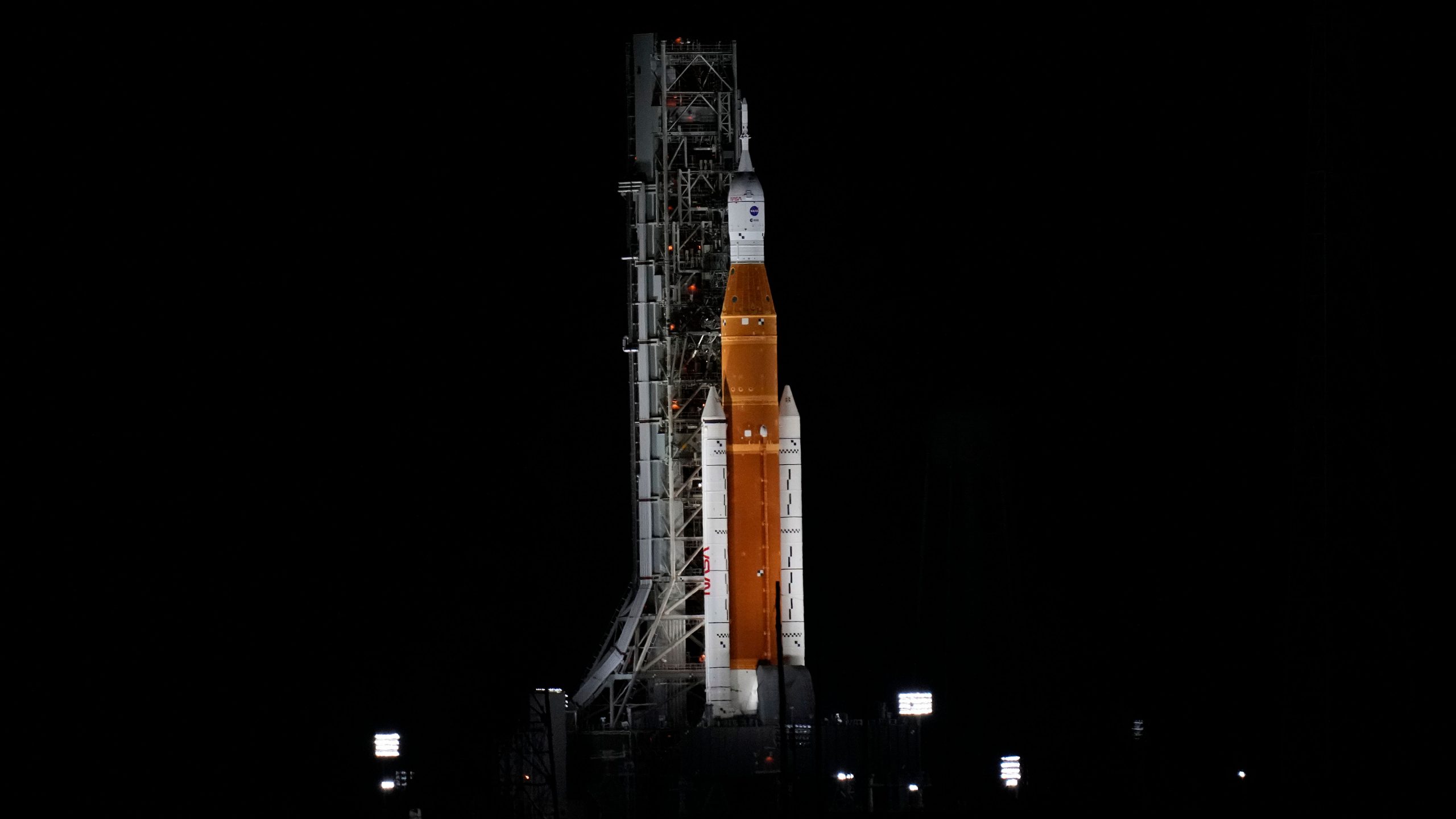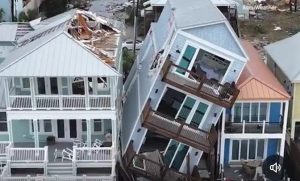As NASA prepares for a third attempt to launch the Artemis I mission landed at the launch pad on Friday morning.
The unmanned test mission is scheduled to launch on November 14 at 12:07 am ET, with a 69-minute launch window. The NASA website will broadcast the launch live.
Also read: SpaceX launches Falcon Heavy on US Space Force mission after 3-year hiatus
Late on Thursday night, the Space Launch System rocket started the several-hour journey of 4 miles (6.4 kilometres) from its inside shelter to Pad 39B at NASA’s Kennedy Space Center in Florida. It took about nine hours for it to reach its destination.
After problems with fuel leaks prevented the first two launch attempts, the rocket had been stored away for weeks when a hurricane hit Florida, forcing it to leave the launchpad and seek shelter.
However, authorities felt secure enough to proceed with rollout, according to Jim Free, associate administrator for NASA’s Exploration Systems Development Mission Directorate. The Artemis team is once again keeping an eye on a storm that may be headed for Florida.
Also read: NASA confirms DART Mission has altered asteroid Dimorphos’ orbit
According to meteorologist Mark Burger, the US Air Force’s launch weather officer at Cape Canaveral, the unidentified storm might form near Puerto Rico over the weekend and slowly move northwest early next week.
“The National Hurricane Center just has a 30% chance of it becoming a named storm. However, that being said, the models are very consistent on developing some sort of a low pressure,” Burger said.
Although weather officials don’t see it developing into a powerful system, they will keep an eye out for any potential effects through the middle of next week, he added.
Also read: Google celebrates DART Mission’s success with tilted search result page
Returning the 98-meter-tall, 322-foot-tall SLS rocket to the close-by Vehicle Assembly Building, or VAB, allowed engineers to investigate problems the rocket has been experiencing in greater detail and to undertake maintenance.
It was a race against time for NASA to launch Artemis I in September because if it remained on the launch pad for too long without taking off, mission-critical batteries might be drained. As they sat in the VAB, engineers could replenish or replace batteries throughout the rocket and the Orion spacecraft that was atop it.
NASA’s Artemis program’s main objective is to send people back to the moon for the first time in 50 years. And the Artemis I mission, which is anticipated to be the first of many, will set the groundwork by testing the rocket, spacecraft, and all of its subsystems to make sure astronauts can safely travel to and from the moon.
Also read: What is the Draconid meteor shower?
But it has been challenging to launch this first mission. When filled with super-chilled liquid hydrogen, the $4 billion SLS rocket encountered issues that caused a number of leaks. As the rocket tried to “condition” its engines—a process that cools the engines down so they aren’t shocked by the heat of its super-chilled fuel—a defective sensor also provided erroneous data.
NASA has made efforts to address both problems. The Artemis team chose to hide the malfunctioning sensor, effectively disregarded the information it outputs. In addition, the space agency conducted another ground test in September while the rocket was still on the launch pad.
Also read: Alien civilisations progressed too much, collapsed on themselves: Study
The cryogenic demonstration’s goals were to test the seals and load the supercold propellant using new, “kinder and gentler” loading techniques than what the rocket would encounter on launch day. Although the test did not proceed exactly as expected, NASA stated it still achieved all of its goals.
NASA representatives reiterated that these delays and technical difficulties don’t always indicate a serious concern with the rocket.
Prior to the SLS, NASA’s 30-year-old space shuttle programme frequently experienced scrubbed launches. Additionally, there is a history of mechanical or technical problems with SpaceX’s Falcon rockets.
Also read: NASA’s DART Mission strikes asteroid Dimorphos: Watch
“I do want to reflect on the fact that this is a challenging mission. We’ve seen challenges just getting all our systems to work together and that’s why we do a flight test. It’s about going after the things that can’t be modeled. And we’re learning by taking more risk on this mission before we put crew on there,” Free said.
Other moon missions are anticipated to be made possible by the Artemis I mission. The Orion capsule, which sits atop the rocket during liftoff and is intended to transport people, will detach when it enters space after takeoff. For this mission, it will be flying empty save for a few mannequins. The Orion spacecraft will take a few days to manoeuvre to the moon, enter its orbit, and start the journey back to Earth a few days later.
Also read: 5 largest meteor strikes on Earth
The Orion spacecraft is scheduled to splash down in the Pacific Ocean outside San Diego on December 9. The mission is anticipated to last 25 days overall.
To verify that both the SLS rocket and Orion capsule are prepared to house astronauts, the mission’s objective is to gather data and test the hardware, navigation, and other systems. By the end of this decade, the Artemis programme hopes to send a woman and a person of colour to the moon.
A similar flight path around the moon is anticipated for the Artemis II mission, which is scheduled for 2024 but will include a crew. And in 2025, Artemis III is anticipated to perform the first lunar landing of astronauts since NASA’s Apollo programme.







